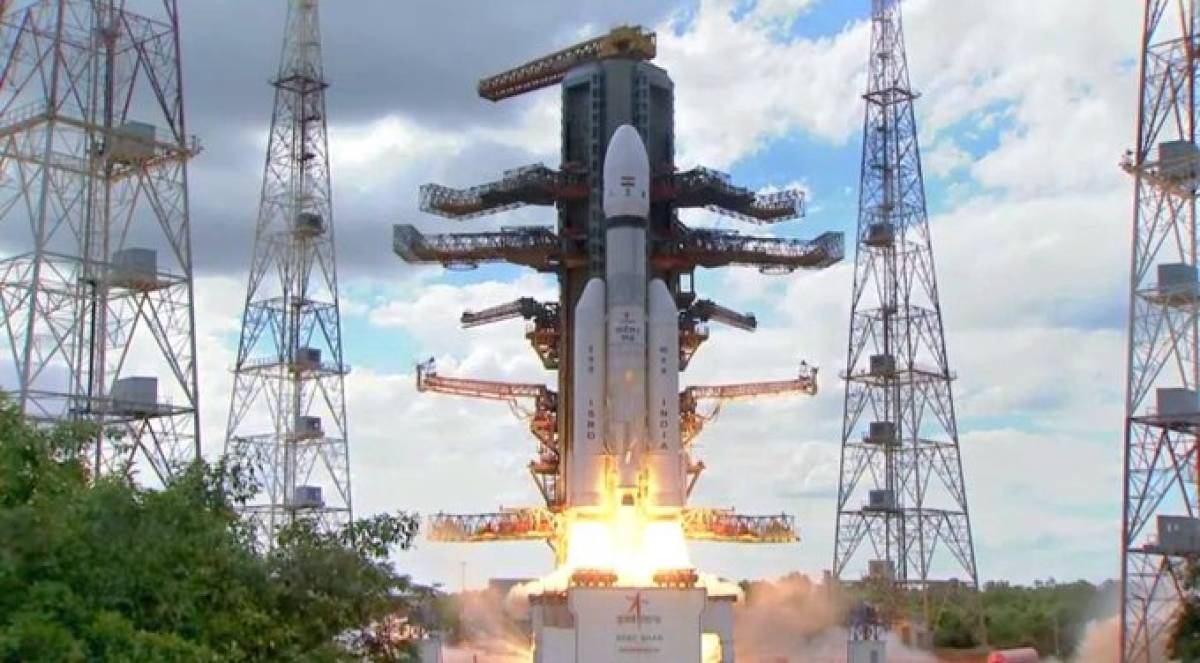ISRO’s Journey to the Stars – A Look Inside India’s Space Program

With little money and few people, ISRO pushed hard to develop its capabilities. Its first satellite, Aryabhata, was launched in 1975.
Since then, India’s space program has achieved many milestones. Its Chandrayaan lunar probe discovered water molecules on the moon in 2008. And its Mars Orbiter Mission (Mangalyaan) succeeded in 2013 on its maiden attempt.
1. Gaganyaan
The ambitious Gaganyaan project aims to send Indian astronauts into space, marking the country’s first manned mission. The Rs 10,000-crore program was announced by Prime Minister Narendra Modi in his 2018 Republic Day address and is expected to take place in 2022, the year India marks 75 years of independence. Four astronauts, who are pilots in the Indian Air Force, have been selected for the mission. The candidates are being trained in Russia and at ISRO’s astronaut training facility in Bengaluru.
The crewed mission will require several components such as a reusable launch vehicle, service module, habitation module, an escape system and other critical sub-systems. ISRO began developing the necessary technologies in 2012, and this month will see the first of three abort missions of the crewed version of the GSLV Mk III (Launch Vehicle Mark-III). The other two will be launched by 2022.
While the Gaganyaan mission will mark India’s entry into an elite group of nations capable of launching manned missions, it also sets the stage for the future of the country’s space programme. The project is expected to boost economic activities and enhance the nation’s research capability. It will also help create new technologies that could benefit the planet in a number of ways, such as improving agriculture and healthcare.
A detailed essay on ISRO is planning more firsts, including a lunar mission with a rover and a satellite that will study the Moon’s surface, as well as its solar system exploration mission with Aditya L1, slated for 2023. The company is also working on a Mars mission, after its Mangalyaan orbiter successfully observed the red planet from 2014 to 2015. ISRO plans to send a rover and lander to Venus in 2024.
As ISRO builds up its capabilities, it is also fostering greater involvement of private companies in the nation’s space ambitions. ISRO is open to a deeper engagement with the private sector in areas such as hardware realization, components supply, health monitoring devices and virtual reality simulators, according to Satyanath. This will be made possible by policy reforms that will allow private investments into India’s space industry.
2. Chandrayaan-3
Almost exactly a year after India’s space agency launched its maiden Mars mission, a small spacecraft called Mangalyaan into orbit, the country’s scientists pulled off another remarkable feat of engineering. They landed a rover on the surface of the Moon’s south pole, an enigmatic area with very few previous observations. The landing marked a major milestone in India’s quest to be among the world’s top spaceflight powers, a national priority that has long been a source of pride.
ISRO has long aimed to build on its successes and expand its global reach. It maintains a fleet of satellites to improve communications in rural areas, to provide GPS assistance for mariners and to track Chinese military activity. It also provides launch services to loft commercial and government satellites into orbit. The company is now eyeing missions to Venus and even the far reaches of our galaxy, with Saturn and Jupiter on the horizon.
Its success in the skies has strengthened India’s hand in international fora, too. It is a member of the G20 and has a leading role in the Quad (with Australia, Japan and the United States) and the Shanghai Cooperation Organization (with Russia and China). Its growing clout in space, backed by a burgeoning science program, makes India an important player on global economic and security issues.
Chandrayaan-3’s landing of a probe on the lunar surface, and more generally, its stunning success, was a vindication of the nation’s investments in its rocket technology and in the physics that make it work. ISRO opted for a design that was “failure-based” with an eye toward what could go wrong and how to mitigate against those failures. The result was a mission with astounding cost efficiency, less than $75 million, including the lander and rover modules called Vikram and Pragyan.
Its success is an inspiration to young people, too, especially in the Indian state of Andhra Pradesh where many students dream of becoming space scientists like A. Sridhar, a graduate of a school in the town of Ongole who went on to become a key member of the team that developed the instrumentation for both Mangalyaan and Chandrayaan-3. His story serves as an example of the ways that India’s growing technological prowess is empowering its citizens with confidence and hope.
3. Aditya-L1
In a move that underscores India’s growing space prowess, ISRO recently launched its first dedicated solar mission, Aditya-L1. This mission will monitor the sun with seven uniquely designed distinct scientific payloads from its position at a Lagrange point L1 — around 1.5 million miles (2.5 million kilometers) from Earth toward the Sun.
A key science objective of Aditya-L1 is to better understand the origin of coronal mass ejections (CME) as well as to study their impact on space weather. The mission will also investigate a number of other solar mysteries, such as why the sun’s atmosphere, the corona, is much hotter than the photosphere surface beneath it.
The mission will launch on a PSLV rocket from the Satish Dhawan Space Centre SHAR, Sriharikota and reach its initial low Earth parking orbit. After a period of time, the spacecraft will make an elliptical transfer to the desired halo orbit around L1. The journey is expected to take around 110 days, which is far shorter than the 298 days that it took Mangalyaan to reach its Mars orbit in 2014.
Aditya-L1 has a total of seven onboard instruments, four of them performing remote sensing and three of them conducting in-situ observation. The remote-sensing payloads include the Visible Emission Line Coronagraph (VELC), which will be able to detect CMEs at their early stages, and the low-energy and high-energy spectrometers SolEXS and HEL1OS. These payloads will be able to observe the solar atmosphere mainly the chromosphere and corona of the Sun with remarkable precision.
The in-situ observation payloads include the Sun Watcher X-ray spectrometer, which will be able to measure the temperature of the solar corona and its plasma. The mission will also use an imaging system to observe the local environment at L1. This is important because space weather events, such as coronal mass ejections and solar flares, can originate from this region. This information will help in improving space weather forecasting. In addition to this, the mission will be able to collect a large amount of data on magnetic field topology in the corona, polarization and dynamics of solar wind, and the solar magnetosphere.
4. NAVIC
As India continues to match the achievements of established spacefaring nations at a fraction of their cost, the country’s space program has become increasingly focused on efficiency. It has shifted away from large satellites designed to carry communications and television broadcasting to smaller ones designed to help people better understand the universe around them. In doing so, the agency has set the stage for India to eventually make it on its own to Mars and beyond.
Last month, ISRO launched a spacecraft dedicated to studying the sun as part of a series of historic successes for the agency. The probe, called Aditya-L1, will reach a parking spot in orbit about 930,000 miles (1.5 million kilometers) from Earth. That’s a spot scientists call the halo orbit, in which gravitational forces allow the satellite to stay put and give it a clear view of the solar atmosphere without obstruction. It’s expected to return data on the sun’s outer layers and shed light on phenomena like solar flares and solar winds, which can cause disturbance on Earth visible as auroras.
Another major development was ISRO’s launch of its newest regional navigation satellite system, the Navigation with Indian Constellation, or NavIC. Using seven satellites, NavIC will provide positioning information service in India and an area up to 1,500 km outward from the country’s borders. It will offer two services, one of which is a standard global positioning service open for all and the other one that is encrypted and available only to authorised users, like the military.
Unlike the GPS system of the United States, Russia’s Glonass, and Europe’s Galileo, NavIC is operated by ISRO and not any foreign agency. This reduces the country’s dependence on other systems and protects against potential hacking or interference.
As part of a plan to boost NavIC’s capability, the agency will soon add a third satellite to its constellation, which will boost navigation capabilities for users in dense urban areas. The first of these satellites is slated to launch later this year, and the final satellite will be launched by 2022.
Read more: ISRO’s Journey to the Stars – A Look Inside India’s Space Program




